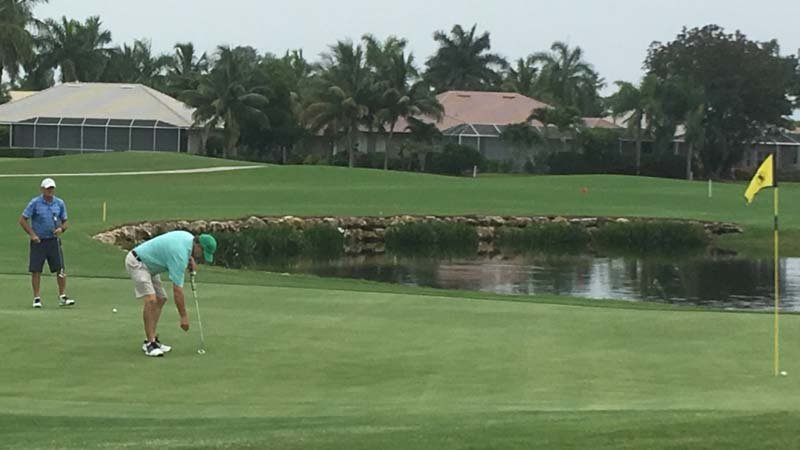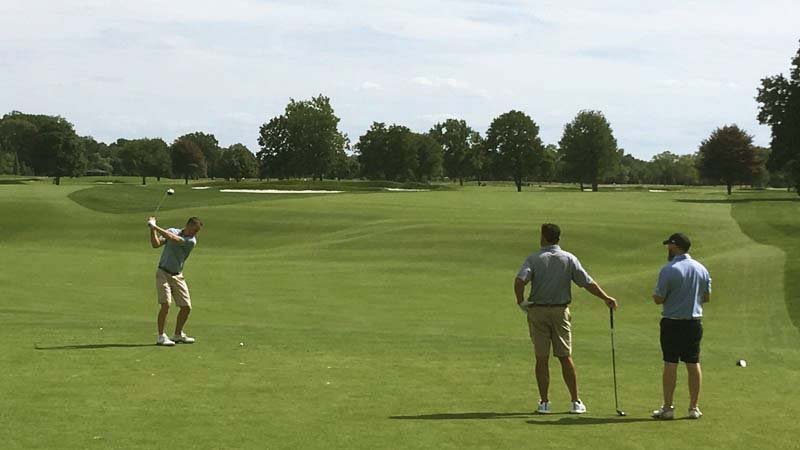Could real estate golf be making a comeback?
At least in some markets, the answer to that question appears to be "yes."
Since a recession fueled by a real estate bust a generation ago, golf course supply vs. demand has been on a course of self correction for the past 18 years. The number of golf courses in the market has been on a steady decline since 2006 as the market seeks equilibrium.
According to the industry's mid-year report card and projections for the remainder of the year, that gap between the number of golf courses that have closed vs. new construction projects appears to be narrowing.
A total of 13 new golf courses opened between Jan. 1 and June 30 this year, with at least that many expected to open by the end of the year. In all, more than 120 golf courses projects are in some stage of planning or construction in the U.S. , making this the most active construction year in a decade, according to the National Golf Foundation.
The game's comeback has been aided by a global health crisis during which many newcomers took up golf and many others who previously left the game rediscovered it. Covid has brought a near-record number of golfers playing record-high rounds, and that increased play has closings and openings inching ever more slowly toward equilibrium. Among those rebounding markets is real estate golf, although it has a much different look than it did during the game's construction boom when almost anyone could buy a home with a golf course view.
For those looking for someone to praise for golf's construction boom of the 1990s and 2000s as well as someone to blame for its bust during the past two decades, developer Charles Fraser might be a good place to start.
Considered the father of real estate golf, Fraser was a 1953 graduate of Yale Law School who, in the 1960s, took over his father's timber interests on a forested South Carolina outpost called Hilton Head Island. Amenities like a golf course, Fraser believed, could help make even the most mosquito-infested land attractive to prospective home buyers.
Although Fraser's most famous creation, Sea Pines, is hardly the run-of-the-mill golf real estate development, the resort on the southern end of Hilton Head attracted copycats seeking to cash in on a similar model during the next several generations.

Eventually, overpriced homes and overvalued golf courses sharing the same dirt pulled the rug out from beneath both, forcing a hard reset that is still felt nearly 20 years later. Although that model has largely been on the decline for most of the past two decades, some version of it could be making a comeback.
During the past 18 years, thousands of golf courses have closed, and a few have opened. Figure in the sparse openings that have occurred each year, and there has been a net loss of more than 1,600 golf courses in 18-hole equivalents since 2006, the first time since 1946 that there were more closings than openings. That trend has repeated itself every year since.
About 2,360 golf courses have closed their doors since the market steered onto a course of self-correction in 2006. Lately, closings have hovered around 100 per year, but some years, like 175 closings in 2017 and 155 in 2020, have been worse than others.
That number has been coming down for the past three years. A total of 93 courses closed in 2021, 97 in 2022, 78 last year and, according to the National Golf Foundation, fewer than 40 have closed through the first half of 2024.
About 2,360 golf courses have closed their doors since the market steered onto a course of self-correction in 2006.
A total of 13 new courses opened between Jan. 1 and June 30 this year, with at least that many expected to open by the end of the year, according to NGF editorial director Erik Matuszewski.
In all, more than 120 golf courses projects are in some stage of planning or construction in the U.S. That includes more than 70 golf courses under construction, with another 50-plus in the active planning stage, according to NGF, making this year the most active golf course construction market in more than a decade, Matuszewski said. There are dozens more in the early stages of planning.
The difference between real estate golf 20 to 30 years ago and what is going in the ground now is dramatic. Much of what occurred previously was an unsustainable model of high-end daily fee or semi-private golf propping up real estate interests. Much of what is being built today in places like South Florida is anything but public access.
The most active markets are Florida and Texas, where several new courses have opened recently, including some very high-end real estate projects like Panther National in Palm Beach Gardens. That property has 139 sites for multi-million dollar homes ranging from 4,000 to 10,000 square feet. According to NGF, more than a third of all new courses, whether under construction or in some state of planning, are in Florida and Texas.
Apogee is a 54-hole facility west of Hobe Sound owned partly by Miami Dolphins owner Stephen Ross. Free of private real estate, Apogee will include villas for member use.
When it is completed, The Ranch, also west of Hobe Sound, will have 36 holes, a 10-hole practice layout, 12-hole short course and 360-degree practice area.
Just how big is the golf boom in Martin County? There are at least nine 18-hole layouts within a 10-mile drive.
Another 20 courses, according to NGF, are under construction in Florida or in the final phases of planning.

Fueling that comeback, in part, was a global health crisis during which many newcomers took up golf and many others who previously left the game rediscovered it. Covid has brought a near-record number of golfers playing record-high rounds, and that increased play has closings and openings inch ever more slowly toward equilibrium.
Since Covid, the game has been adding an average of nearly 1 million players per year, and continues to grow. The 23 million golfers who played last year are the most since a record 29 million players in 2006.
Rounds played in 2021 matched a record high of 518 million rounds, a mark that had stood for 21 years, and was topped again last year by another 2 million rounds.
It is unknown whether this boom, or at least a shift to equilibrium, will stick this time, or result in another bust. But whichever occurs, Charles Fraser should get some of the credit, or some of the blame.

